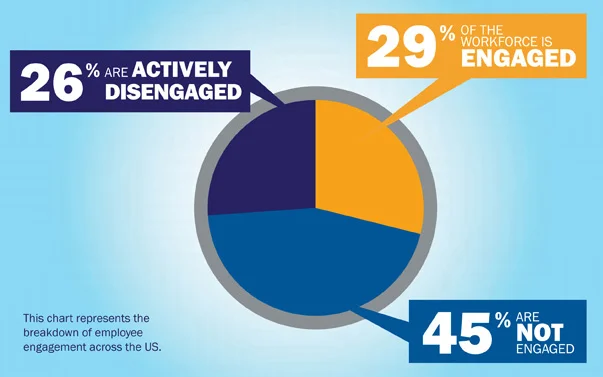Researchers within the mainstream human resource management (HRM) field have long been concerned with the question of how the management of people can lead to improved organisational performance outcomes (Huselid 1995). Indeed, the quest to understand and operationalise the HRM-performance link has come to be seen as the overriding purpose of strategic human resource management (SHRM; Delbridge and Keenoy 2010). It was therefore no doubt with some degree of despondency that researchers and practitioners alike read Guest’s (2011, p. 11) recent conclusion that ‘we are still in no position to assert with any confidence that good HRM has an impact on organisation performance’. The area remains beset with problems of theory, methodology and data (Boselie, Dietz and Boon 2005).
Read MoreMusic can be used to help us remember learning experiences and information. In Active Learning Experiences music creates a soundtrack for a learning activity. The soundtrack increases interest and activates the information mentally, physically, or emotionally. Music can also create a highly focused learning state in which vocabulary and reading material is absorbed at a higher rate.
Read MoreIn this article, we explore similar emotional issues from the perspective of musicians. We conducted individual interviews with one male and nine female musicians whose professional experience ranged from 10 to 65 years and whose primary musical instruments were violin (2), flute (3), cello (l), and piano (4).Eight of these musicians had composed at least one original work. They were asked to describe personal feelings during the processes of composition or during preparation for a performance, during the performance itself, and after the performance. The interviewer provided open- ended questions and minimal structure for their answers, intruded as little as possible, and did not focus on the termination phase. The musicians’ descriptions were then analyzed qualitatively for common themes. Thus, this article reflects what musicians described about themselves and is a qualitative first exploration rather than an experimental investigation.
Read MoreThe subject stated feeling optimistic about progress after the first massage, although he felt sore for a couple of days. He stated feeling less stiff in the mornings. By his third appointment, he was thrilled at the improvement in his back pain, and stated that his injured shoulder also felt more flexible and less painful when moving his arm. He reported being able to stretch out his medication doses over longer periods, cutting out at least one of the doses daily.
Read MoreClinical reasoning requires that a massage therapist be investigative. It is important to be watchful for clues that can guide assessment and treatment, and to continue to integrate new information as it appears. Using the information-gathering process, the massage therapist can discern between similar conditions and make sound decisions about treatment—or even decide not to treat the condition at all(5). Being reflective is essential to improving CR skills(13–15). When cases are reviewed, when conversations are remembered and when assessment and treatment choices are reevaluated, alternate approaches can be considered. Massage therapy might seem like an intuitive art, but through the process of reflection, the reasons for the choices made become available to conscious examination.
Read MoreRecent advances in the study of the brain have enhanced our understanding of the way that active engagement with music may influence other activities. The cerebral cortex self-organizes as we engage with different musical activities, skills in these areas may then transfer to other activities if the processes involved are similar. Some skills transfer automatically without our conscious awareness; others require reflection on how they might be utilized in a new situation.
Read MoreIn 2013 Gallup announced 70% of the American workforce was disengaged, and the World Health Organization estimated workplace stress costing American businesses up to $300 billion a year. As we welcome 2016, both statistics are a harsh reality and each continue to rise. So much so that stress has been called the “health epidemic of the 21st century” by the World Health Organization. An epidemic that will be one of the most significant challenges businesses face over the next decade—a threat to engagement, productivity, retention and looming health care costs. - HuffingtonPost.com read more...
Read MoreHundreds of scientific studies have been conducted on the benefits of Meditation at different universities and research institutions worldwide over the past 40 years. The National Institutes of Health have awarded over $26 million to research the effectiveness of meditation for reducing stress and stress-related illness with a focus on cardiovascular disease. Findings have been published in leading scientific journals, including The American Journal of Cardiology and the American Heart Association’s Hypertension and Stroke.
Read MoreMeditation has been extensively practiced in many civilizations for thousands of years as a means of cultivating a state of well-being and for religious purposes. It has now started to be studied in terms of its influence on the brain and body and used in clinical settings. This chapter will first review meditation effects at the physiological, attentional, and affective levels and the scientific paradigms used to study these effects. A clinical application on emotion regulation will then be presented.
Read MoreThe paper presented here discusses briefly, the development in the context of mindfulness properties of the human ecology. Further, the mindfulness meditation therapy for health and mind enhancement is explained that significantly highlights its positivity in various dimensions to the human body and emotions. This research will critically analyze the past Meta researches, which have been directing their efforts to indicate the positive effects of meditation related to health, stress, attention deficit issues, concentration, learning, memory, etc. The purpose of the research is to prove the positive outcomes when mindfulness meditation is practiced by different human beings regardless of their physical or social characteristics. Eventually, this brief study will conclude to present the potential for future considerations and addition of this school of thought in the modern medical capacity.
Read MoreHere's a quick tip I intuitively picked up, that can help you quickly pick up and adapt a new language for conversational purpose.
In order to start mastering a language you’re trying to learn, you must read and write in that language. But the funny thing is, most of us learn new languages to be able to speak it. That's how babies learn to speak a language, by actually trying to speak.
Read MoreIt is the job of a great leader to be the catalyst of cultural health and happiness in their organization. You as a great leader must create an environment for your people to thrive and strive for excellence. As a great leader, you need to keep your people informed, in order for them to feel included, to feel as an integral part of your team and your agenda. You must treat them well, in order for them to get motivated and be and do their best.
Read More
Every organization should utilize the power of these three training and development programs and have them in place as part of their regular, ongoing training and development curriculum to gain a competitive edge in the marketplace.
Read MoreThe business landscape has always been endlessly changing. The markets have been growing, aligning, adapting and realigning with the continual new desires and demands of the consumers, technological and science advancements, and yet these two business concepts have always been continually constant like no others.
First Constant Concept is, that hiring lazy and incompetent people and then constantly bitching and moaning about it and saying “If only they did their f***ing jobs…” referring to the workers you yourself green-lighted to be hired, never worked, never works and will never work.
Read MoreWhether you’re trying to engage your employees, B2B or B2C clients, search engines, social media audiences, or you’re trying to get any other type of attention from anyone else, the key word is engagement.
- Over 70% of US employees are disengaged, under-engaged at work.
- The rising costs of disengagement are reaching over $500 billion each year.
- It is in every company’s best interest to identify employee and customer engagement issues and address them with innovative solutions.
Marketing is an educational process and training and development is a marketing process. Why should marketers study and understand marketing, and why should educators and trainers study and understand marketing.
https://www.zar.ink
Stories are a hot topic in marketing because they have been shown to be superior to facts in getting attention, being remembered, in changing opinions, in stimulating social activity, developing emotion, and curiously, even in communicating facts. Many firms have added journalists, editors, and filmmakers to their staffs to create or find meaningful stories and present them in a compelling way.
Read MoreFrom your company name, slogan to your employee's business cards, marketing, sales materials to your social media pages and your website you create impressions, opinions and ultimately perceptions about your company, your products and services. Every interaction with potential and existing customers, every point of communication, every letter, every email, every marketing event is an opportunity for you to create and reinforce your company’s image as a perception in the minds of your potential and existing customers.
Read More

















